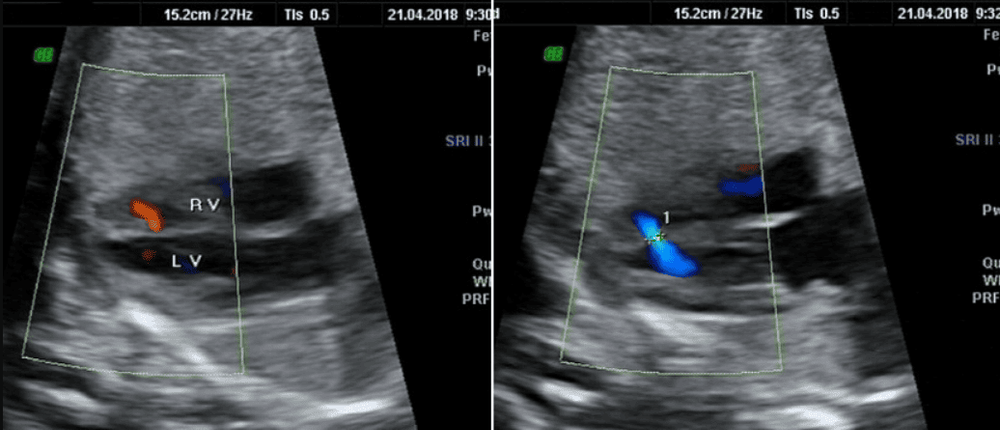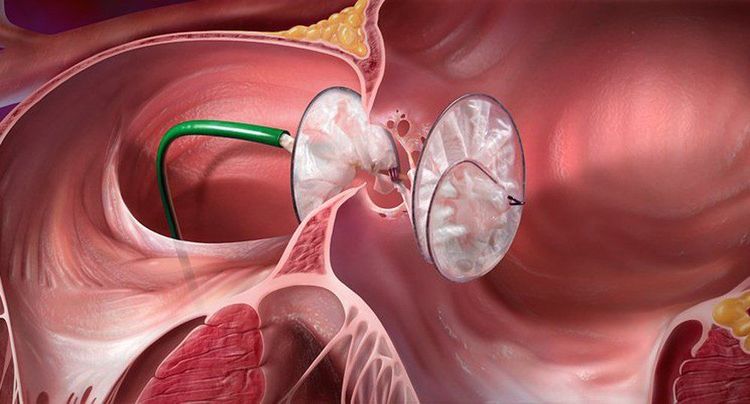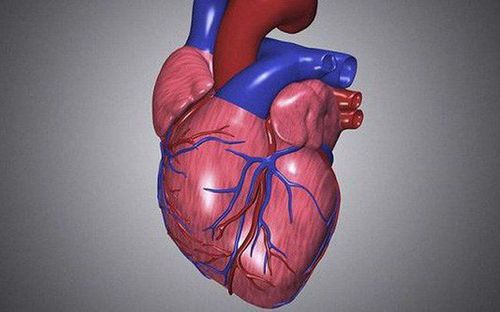This is an automatically translated article.
The article was professionally consulted with Specialist Doctor I Dang Thi Ngoc Chuong - Pediatrician - Pediatrics - Neonatal Department, Vinmec Central Park International General Hospital.Heart disease with foramen ovale is a fairly common congenital heart defect. This condition is usually caused by a hole in the heart that doesn't close properly after birth and it has no obvious signs or symptoms.
1. What is oval hole survival heart disease?
The foramen ovale (FO) is a common opening between the two chambers of the heart (the right atrium and the left atrium) of the fetal heart. This foramen ovale usually closes between 6 months and a year postpartum. After birth, this oval foramen remains open, called the foramen ovale.Heart failure oval occurs in about 25% of the population, but most people with this condition are not aware they have it. If a newborn has a congenital heart defect, the foramen ovale is more likely to remain open.
The cause of the disease may not be clear. However, many studies suggest that part of the cause may be genetic. Understanding normal heart function in babies and the role of the ovaries before birth is extremely important.

2. Symptoms of heart disease exist for the foramen ovale in newborns
Oval heart disease in babies usually doesn't cause problems, so most babies with it have no symptoms. It is possible that it is a hidden condition that does not produce the characteristic symptoms of the disease.Sometimes heart with oval hole is useful for children. Because, babies born with serious heart problems or pulmonary blood pressure (high blood pressure in the lungs) and a hole in the heart will have fewer symptoms because it allows blood from the two sides of the heart to mix.
3. Diagnosis of heart disease with the foramen ovale
Your doctor will order one or more tests to diagnose heart disease at the foramen ovale for babies as well as adults:Echocardiogram: An echocardiogram that shows the anatomy, structure, and function of the heart. In this test, sound waves are directed at the heart from a transducer held above the chest and send images of heart activity to a monitor. Your doctor may use this test to diagnose heart disease at the foramen ovale and detect other heart-related problems. In addition, based on this test it is possible to further identify color Doppler ultrasound (Sound waves bounce off blood cells moving through the heart, they change in intensity. These changes are Doppler signals and color on the computer screen
These help the doctor check the speed and direction of blood flow in the heart) and bubble studies (using a sterile saline solution shaken until bubbles appear) Small bubbles form and are then injected into a vein.The bubbles will move to the right side of the heart and show images on ultrasound).

Other tests: Your doctor may recommend additional tests to make a correct diagnosis when you have been diagnosed with heart disease with a foramen ovale or have had a stroke. Some other tests such as brain, nervous system...

4. Treatment of heart disease at the foramen ovale
Most people with heart disease at the foramen ovale do not need treatment. However, in certain cases, doctors still recommend intervention and treatment.Reason for oval hole closure: If oval hole is found on ultrasound and doctor's intervention is recommended in case of low blood oxygen level treatment. Plus, closing the foramen ovale may prevent migraines or possibly prevent strokes. However, some stroke patients with closed foramen ovale still have recurrence despite medical treatment and no other cause can be found.
Surgery to close the foramen ovale includes:
Using cardiac catheterization and inserting a device that plugs into the foramen ovale. Your doctor will insert a catheter with the pointed end of the device into a vein in your groin and point the device into place. Although complications are uncommon with this procedure, they can occur, such as a tear in the heart or blood vessel or known device type. Oval hole repair surgery: The doctor will surgically close the foramen ovale with openings and stitches to close the opening like a flap. This procedure will use a very small incision.

5. Heart disease complications exist oval hole
In general, the heart with the foramen ovale does not cause complications. But some studies have found the disorder is more common in people with certain conditions, such as unexplained strokes or transient migraines.In most cases, small blood clots in the heart can travel through the foramen ovale to the brain and can cause serious risks such as stroke. The link between the heart at the foramen ovale and stroke or migraine is still being studied by scientists to provide more definitive evidence.
In rare cases, heart disease at the foramen ovale can cause a significant amount of blood to pass through the lungs, resulting in low blood oxygen levels (hypoxia). Or as it may happen in a sea dive, a blood clot is guided by air through the foramen ovale and poses serious risks as well. Or cases of heart defects can occur with heart disease at the foramen ovale.
Please dial HOTLINE for more information or register for an appointment HERE. Download MyVinmec app to make appointments faster and to manage your bookings easily.
Reference source: mayoclinic.org













